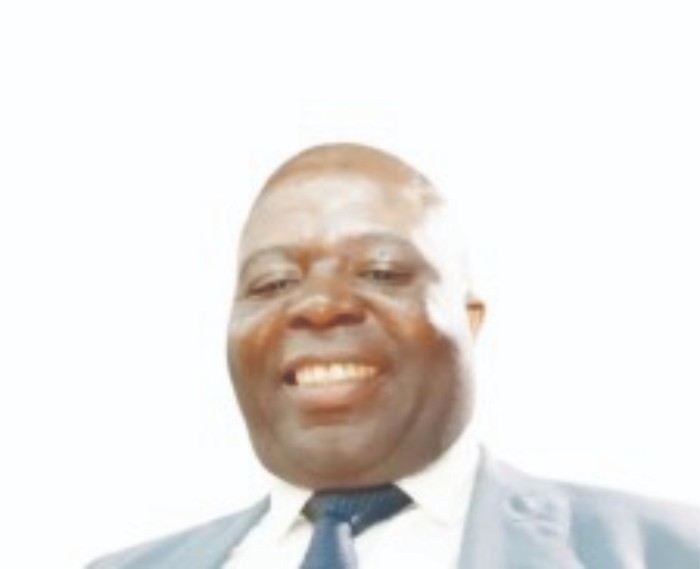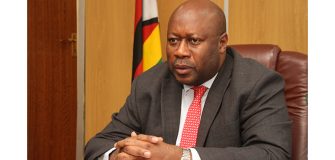New work ethic at passport office
Share

Spending nights in passport queues and then tramping from one office to another in what seems to be a never-ending process in a fairly squalid prefabricated building with grim-faced staff, is now history.
The Registrar-General of Zimbabwe has not just introduced a new electronic system, but has moved the passport office from the temporary structures into a decent purpose-built and spacious set of halls.
Admittedly, this has taken a couple of decades to build, but the Second Republic found the money to pay the contractors to finish the building, and those controlling the passport office have taken the opportunity to reassign staff.
In some of the processes there are a lot of “tellers”. A much faster throughput plus the decent conditions mean that applying for a passport is suddenly much like dealing with a decent bank where the manager values the customer.
It now takes 40 minutes and you go back the following week for the document.
While staff in the grossly overcrowded old prefabs did try, the appalling conditions and dealing with the sheer squalor day after day, and year after year, did get to them and they could lose their cool.
The whole mess also encouraged con-artists to slink around the pavements outside offering to “help”.
While they were unable to do anything useful, some desperate people looking at what they were facing inside handed over some money, discreetly, and then found they still had to rejoin the queues and go through the process.
Walking into the new complex along Herbert Chitepo Avenue in Harare, one is received by friendly security personnel who direct clients to the shed at the back of the 10- storey building where documents are vetted before one pays the passport fee.
A Herald reporter participated in the passport application process this week to have a personal experience of the whole process.
The reporter went undercover as an ordinary member of the public, without seeking the short cuts that journalists and others needing travel documents urgently as part of their job, are sometimes allowed.
In the shed, two middle aged staff members, a man and woman, check whether the applicants have national identity cards, birth certificates, and in the case of renewal applications, they ask for old passports or their numbers.
The staffers on the first desk are friendly, patient and helpful to those who are unfamiliar with the process. After satisfying the pair that the papers are in order, one is issued with a checklist showing he or she has produced the required documents before being referred to the CBZ banking hall on the first floor of the RG’s building.
In the bank, there are seven tellers ready to accept deposits for passport application fees and the process takes less than five minutes.
That old room where payments were processed is just a hideous memory with this part of the process contracted out.
After being issued with a proof of payment document, the applicants are referred to the next room on the same floor inscribed “ CARDING”.
Right at the entrance, three officers separately attend to the applicants asking for proof of payment and the other required documents before issuing out the passport application form.
Applicants sit on benches in that room, filling in the forms before approaching another desk manned by one officer.
That officers looks at the forms to see if the applicant has correctly filled in the information.
If there are errors, he assists the applicant to have them corrected.
From that desk, one enters another room where there are five officers in cubicles, rather than just one, dealing with applicants. The old corridor queue is gone.
Officers in that office punch applicants’ details into the electronic system. The last office is the one inscribed “ENROLMENT”.
There is room for 29 cubicles of glass and aluminium, and each of those 29 officers can do all the work on your application, so there are no delays.
In that big office, application forms are submitted before a photo shoot. A print out of the information entered into the system is given to applicants for confirm.
The applicant will then append a signature confirming the information to be true before leaving the building.
All in all, The Herald spent almost 40 minutes at the passport office as opposed to the old days when applicants would spend the whole day at the passport office.
Senior citizens, aged 60 and above do not even follow the queue.
They are just assisted from one office to the other without any challenges.
For an ordinary passport that costs US$120, applicants are advised to collect after seven working days.
It was all smiles for the applicants who were in the ENROLMENT office as they showered praises on the system, the space that allows enough officers to be deployed, and the new work ethic at the RG’s office.
Mr Rob Davy who was served on Wednesday could not hide his joy as he left the passport office.
“The new system is highly efficient, friendly and fast. I spent less than an hour here and the whole process is complete,” he said.
However, Mr Davy said the RG’s office should improve on their ablution facilities.
“They need to fix the toilet facilities for the public here. One of the toilets is out of order and the other one is locked. There is need to address the issue but otherwise I am happy with the service,” he said.
Ms Norman Chivese described the service as “excellent”.
“I could not believe it when the officer in the last office told me the process was over. The service is excellent and the whole process took about 40 minutes after the initial verification done in that shade. “However, they should fully computerise and go paperless to enhance the system. They should do away with the paperwork and go digital. We should not be asked to carry photocopies of identity documents,” said Ms Chivese.
Mr Reason Mandimika, a senior citizen, hailed the new system at the passport office saying the office should publicly make an announcement to fellow senior citizens that they get preferential treatment.
“I am happy. The service was good. The staff are friendly and helpful. I feel there is need to raise awareness to the elderly out there that they can be served without delay. People are not aware of such a good service.
“There is need for more staff in the offices to ensure a more efficient service. In the last big office with 29 cubicles, but there are no benches. The wait is very short but there is need to put benches there so that some people may rest if there are bigger queues,” said Mr Mandimika.
The e-passport was launched after Government entered into a partnership with a Lithuanian company, Garsu Pasaulis, on a build, own, operate and transfer basis to produce the new passports that meet modern international standards that will allow Zimbabweans to travel without additional complications.
The switchover will also eliminate the large backlog of applications built up during the lockdowns.
The partnership will also see the company refurbish provincial and district registry offices and provide material to produce national identity cards.
In addition, an online passport application system will be introduced, to allow applications and payment for the documents online.
An electronic passport or e-passport contains an electronic chip.
The chip holds the same information that is printed on the passport’s data page: the holder’s name, date of birth, and other biographic information.
An e-passport also contains a biometric identifier. All of these features are designed to protect citizens from identity theft because it is difficult and expensive to steal the information stored on the document’s encrypted digital record.
E-passports also allow for faster passage through transit at your home border post.Herald.












